Build NBA Arena Next to Potawatomi Casino
City could create TIF district in valley on little-used land, state assemblyman proposes.
The 5-county sales tax created to build Miller Park for the Milwaukee Brewers continues to ache in taxpayer minds. The shadow of that political fight looms over the plans to create a new location for the Bucks to play NBA, which is frankly not America’s favorite pastime. Having said that, I applaud my friend Herb Kohl‘s desire to continue his passion and investment in the team; he is a genuine leader who has helped build Milwaukee for the better.
But, the current debate over a new arena is flawed and does not reflect what we learned from the Miller Park financing effort. Let’s start with biggest impediment to a smart discussion: insistence on a downtown location and especially near the current footprint or somehow adjacent to an expanded convention center.
There is absolutely no serious economic argument that a new Bucks area would catalyze increased economic development Downtown. There are many cities that have successfully built just outside their central business district in what would be called “underinvested areas” and it works: Chicago, Washington DC, and Portland, OR to name a few.
The Trailblazers play in a revitalization area just east of downtown across the Willamette River with easy access to Interstate 5 and Portland’s successful MAX light rail system. The Bulls play just west of Greektown with Interstate and transit access. And, in Washington DC, the Verizon Center sits in Chinatown with Metro access and easy route to I-395. All three cities have strong economies, are pedestrian and transit friendly, and their downtown commercial activity appears to be healthy even with heavy suburban options.
The idea that a new arena would boost things like housing, shopping or tourism ONLY if the facility is located Downtown does not fit reality or other cities experiences. Yet we as taxpayers and in my case as an elected official, are being asked to pull our wallets out to help pay the bills.
Raising taxes or, even worse, creation of a Super TIF would be a slap in the face to Milwaukee taxpayers, whose neighboring counties have taken votes to block raising taxes. A Super TIF is simply taking money out of the General Fund, using locally generated sales and income taxes with a district boundary, and paying for the arena instead of what they are designed for: paying for universities and technical colleges, K-12 public schools, transportation projects, health care and safety net service, public safety and prisons.
Instead, there are other options and one of them happens to be in my Legislative District, an area that is ripe for new neighbors. And the location I have in mind follows the thinking and planning I believe is necessary for a successful project regardless of where it ends up: minimal use of public dollar with no tax increase, connecting to a larger vision for Milwaukee’s Downtown, seeking out a distressed or “under-utilized” piece of land, and importantly, strong connections to the Interstate and transit system.
Using a more traditional TIF model, the new NBA arena would fit perfectly just north of the Potowatomi Casino and Hotel off 13th and Canal. Existing structures are owned by the city of Milwaukee which uses this land for DPW trucks and traffic signal stuff. The other location that would involve negotiation and/or eminent domain action, is the Keep Greater Milwaukee Beautiful parcel, across the Menomonee Canal.
Neither KGMB or the city are now paying taxes on those properties, making a TIF more useful and effective.
There are huge benefits to this location:
- It’s currently under-utilized and contributes little to the tax base of the city.
- Other options exist for City DPW vehicles and equipment other than the Menomonee Valley.
- Similarly, KGMB services could be connected with nearby Mill Valley or Miller Compressing.
- I-94 eastbound has an exit at the doorstep of 13th street and St. Paul.
- I-94/43 North has an exit at 10th street, seconds away from this location.
- Alternative highway access is already provided for I-94 via Canal Street at Miller Park.
- The 6th Street viaduct connecting with Canal Street, provides further auto and bus access from Downtown to the north, and to the South Side through Walker’s Point and the up and coming Fifth Ward.
- The Milwaukee Intermodal Station is blocks away and a TIF project could include financing to extend the downtown Streetcar to the new Arena and head north to Marquette University, ultimately connecting with the Convention Center, Pabst Brewery development, and Park East corridor.
- Most likely, the proposal would site the arena where KGMB is located, with some additional acquisition necessary.
- Parking structures would go where the City DPW property sits.
- Heated and properly lighted sidewalks could connect Marquette University campus via 13th street with the new arena — no small point given that Marquette’s basketball team would play at the arena including the games during NCAA playoffs.
- Skywalks could connect the Potawatomi Casino and Hotel, keeping in mind the bulk of Bucks games are during cold or inclement weather. To the extent out of towners and tourists are key markets for NBA games, having a nearby attraction like a casino and hotel is important. On the flipside, the likelihood of someone coming to a Bucks game, dropping over $100 on tickets and parking, and then saying “heck, let’s go shopping for an hour or two and spend more money” is pretty unrealistic.
- If fiscally workable, the TIF could build further public support and help the city of Milwaukee by adding non-contiguous parcels in the area for a complete commercial and residential overhaul: improved sidewalks, sewers and streets, greening and rehab of older housing stock, and workforce development assistance for under and un-employed residents. Likely areas would be just north of Marquette and west of the Freeway; as well as the South Side from S. 35th east to Walkers Point and south to Greenfield Avenue. TIF money could improve nearby local, neighborhood and downtown roads as well as improve the 16th Street Viaduct, with better valley access.
Along with creative TIF structuring, selling off the existing Bradley Center property could yield a significant contribution to construction costs. Similarly, that area of Downtown is now cleared for construction when it comes to an expanded Convention Center. Re-opening parts of 4th street, 5th street and using transit as a connector, could mean a seamless “district” which goes from Boston Store on the South and the existing Wisconsin Center footprint, all the way north to the Pabst development and Park East Corridor. This allows for hotel, commercial and retail developments, and importantly housing. Expanded downtown housing is critical to improving the utilization of land west of the river and would help bridge Wisconsin Avenue up to McKinley where the new Interstate ramps effectively serve a future marketplace at Park East. This bodes well for King Drive development over the long haul.
It makes more sense to put the new arena, which is almost totally a one-stop destination, in and out for events, in a revitalization area, and push for bigger and better in the current Wisconsin Convention Center and Bradley Center territory: more convention space, more hotel space, more street level retail, and more housing options.
And, as noted, the 13th street site, is easily accessible to Interstate traffic, local roads, existing major attractions like Potawatomi, and Marquette University. But it’s also a hop, skip and jump over to 6th street where the Convention center sits now. Grand Avenue Mall is nearby. And, with an expanded streetcar route, visitors and Milwaukee residents themselves could never once use their car to enjoy any of these locations: Downtown/central business district, Casino/Hotel, Harley Museum, Convention Center, Pabst and Park East developments, MATC campus, and other important government office locations as well as, of course, the new arena itself.
South side neighborhoods from the 5th Ward to Walkers Point, all the way west to Clarke Square and the Layton Boulevard West Neighborhood/Silver City Main street would benefit from the nearby economic development as well as any residential TIF, transit access, road improvements, etc.
Not one penny of this would come from a sales tax increase. No diversion using a Super TIF which would drain the general fund of sales and income taxes in already tight fiscal conditions. Potential financial investments could come from a seat at the table for Potawatomi, Marquette, the City of Milwaukee, Milwaukee County and of course state dollars could be positioned for modest investments via: WisDOT, DWD, DNR, Commerce and Tourism Departments. Clearly, a financial role for the current Bradley Center and Wisconsin Center is going to be critical.
As will be the generous contributions from team owners themselves and Herb Kohl. Nothing in life is perfect and neither is this plan. But I think it’s worth discussing. With this caution, which may be echoed by many, many other elected officials: Do not expect my vote to raise taxes or harm public services in Milwaukee via a Super TIF.
Josh Zepnick represents the Ninth Assembly District which includes the majority of the Menomonee Valley. He currently sits on the Legislative Council study committee reviewing the use of TIF plans in Wisconsin.
Political Contributions Tracker
Displaying political contributions between people mentioned in this story. Learn more.
Op-Ed
-
Unlocking Milwaukee’s Potential Through Smart Zoning Reform
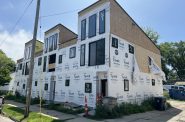 Jul 5th, 2024 by Ariam Kesete
Jul 5th, 2024 by Ariam Kesete
-
We Energies’ Natural Gas Plans Are A Mistake
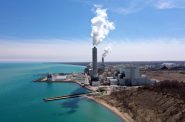 Jun 28th, 2024 by John Imes
Jun 28th, 2024 by John Imes
-
Milwaukee Needs New Kind of School Board
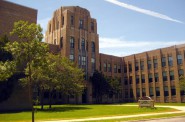 Jun 26th, 2024 by Jordan Morales
Jun 26th, 2024 by Jordan Morales


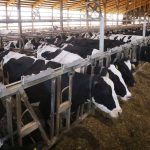




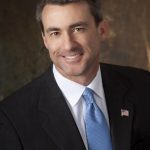






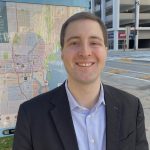





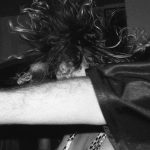

Some interesting points. As for skywalks though, the arena would sit nearly 1,000 ft from the hotel, at either location, so I don’t think they’d really be feasible.
Unless you’re referring to the lot at the NE corner of Canal and 16th.
The “Fifth Ward” does not exist! It references a portion of Walker’s Point, which predates that moniker! I wish people would stop using it, but yes, Walker’s Point is up and coming, and has seen an influx of development over the past few years. Overall, interesting idea, although it would probably never happen in the Valley.
First of all, when I go to Bucks/MU/Admirals/concerts, etc., it’s almost never a “one stop’ destination. It usually includes meeting with friends for dinner or drinks before and maybe after the game. An evening of second hand smoke in an Indian casino sounds horrible. Secondly, to base an argument on location and connectivity for a new arena on the proposed street car is a bit presumptuous. The same people that are trying to kill the arena are also trying to kill the street car. We can’t get the starter line built and he’s talking a street car expansion. Furthermore, grade issues will most likely keep the street car out of the Valley. Finally, I think the worst argument the Rep has is not to build the arena downtown because we’ve always struggled with our downtown. Do your homework. I’ve been to Cleveland, Mpls and Ind. Not a huge sample size, but they are all located in vibrant downtown locations and are similar to Milwaukee. No one will walk to the Valley for Basketball games even if the sidewalks are heated.
I understand arguments for building outside of downtown and even for not building a new arena at all, but the Valley is a horrible idea. I know Zepnick tight with the Potawatomie Tribe, but it’s a bad location. The Valley is a black hole. If done correctly, the arena can have a catalytic impact that drives economic development. It will not have any impact in the Valley. It needs to be in a centralized, walkable / transit friendly area near the hotels, convention center, restaurants and bars.
We keep making the same mistakes in this city, by creating little islands of development that aren’t connected. Let’s do it right or not at all.
I am starting to warm up to this idea even while I still think downtown is best for the arena. One quibble with your examples from other cities though. The Verizon Center in DC is right in the middle of downtown. It’s true that the area was a little rundown when they built it and that it’s totally revitalized now, but it is absolutely downtown. A better example would have been their baseball stadium which was truly in an undigested area. Sorry… I’m glad we’re having this discussion though. Fear the Deer!
I personally have been trying to advocate the Valley as a possible site, albeit perhaps in the Miller Park lot. Between the casino, the ballpark, the arena, the Harley museum and the Iron Horse, I would think that would be more than enough impetus for other parts of the Valley to then become of interest to investors as an entertainment corridor. I’m glad someone with some pull has at least made it part of the discussion.
David: I, personally, am a Marquette season ticket holder — I don’t do anything before or after the games. My goal is to get in quickly, watch a game, and get out quickly. As such, this plan speaks to me.
Also, Potawatomi has smoke-free areas, so you can avoid that part you say you don’t like. I, personally, have only been once. I prefer to save my money for season tickets. 🙂
I don’t see the Valley as a black hole — I see it as a huge opportunity. While I, too, take issue with the idea of a streetcar, and also don’t think anyone will walk there, there are other ways to make the Valley work that I think should at least be considered. It’s good to see the discussion getting started.
No way.
I appreciate the points made here, it’s a well written argument. But the essential aspect of an arena is to be a part of the community – as well as a larger convention area – ie the convention center needs to be nearby. It also needs to be WALKABLE and TRANSIT connected. Cars should be the 3rd priority.
Finally in order to create a true economic multiplier small businesses,restaurants and bars need to be WALKABLE from the Arena. There is very little walkability in the Valley and the Casino is a horrible place that we should tolerate, not promote.
@Tyrell Agreed. The valley arena plan is well poor, and quite frankly I have no idea how Rep Zepnick thinks it could pencil out using a TIF… very odd.
@Tyrell- would you be more agreable if the arena would come up to the 16th Street viaduct level including a well designed bus stop? This would be more walkable for the bars around Marquette and perhaps spur more bars near Clybourn. Make the whole viaduct more ped friendly and I’m sure all restaurants at 16th and National would benefit also.
I still prefer a downtown arena but if we could make the valley more accessable by brininging projects to viaduct level it might be beneficial.
Debate away, where to put it but first where will the money come from, not taxpayers. maybe Potawotami
I attend about 25 events at the BC every year and I go to a bar or restaurant before hand about 80% of the time. If a new arena was built in the valley that number would drop to almost zero it would involve me having to park twice and simply would not be worth the time for a weekday game after work. I think the valley is a fair consideration but unless Poto is going to pay for it I just don’t see the benefit over downtown. I actually cannot think of a single business it would benefit other than Poto itself.
Finally, the article says MU would play there for the “NCAA playoffs” which is a term I never heard plus not true. MU is not allowed to play an NCAA tournament game at it’s home arena.
Casey –
Maybe. And also maybe if the streetcar were a proper light rail line that went there and also beyond to the stadium.
It’s not a horrible idea, it’s just that downtown and the convention center area is sitting right there and badly needs the stimulus.
No way. Miller park works in the valley because you need the space for tailgating. The brewers have a unique fanbase in the sheer number of tailgaters at every game. David is right, although not everyone goes to a restaurant or bar before/after games, many people do. This would move a lot of business to an area that was meant for industry and jobs, not entertainment. Not only would the selection be poor, but we’d be spreading the entertainment dollars to an entirely new area of the city when we should be supporting the already existing ones.
Is this really just a ploy to help boost the coffers of the Potawatomi?
Put the arena (entertainment complex) downtown, then recruit an MLS team or (NASL team), and connect a smaller stadium to Potawatomi. It would be better utilized by the largely hispanic market on the south side. I think a futbol team would be largely supported in the Valley, and Milwaukee in general.
I think this is an option worthy of serious consideration, and it should not be dismissed out of hand, especially if the financing is feasible.
There might be ways to design this that such that it fosters walkable development, especially if the connection to 16th Street is well-planned and pedestrian/transit linkages are enhanced (I agree that streetcar expansion is a stretch to rely on, so I wouldn’t cite that yet, though it is nice to imagine). The proximities to the casino/hotel and to Marquette have merit, but perhaps not enough on their own. Still, it’s worth data-gathering and review.
Downtown still initially seems to make more sense and yields broader benefits, but I also don’t think we should too quickly dismiss the Valley, especially given that the whole arena debate faces obstacles in public finance and a hostile tenor, even in the city, let alone the rest of the county or (heaven forbid) the surrounding counties that like to pretend they are islands unto themselves.
I want to see the best arena deal possible that maximizes smart development, keeps the Bucks here, and helps to revitalize parts of the city that need it. If the so-called Super-TIF and other downtown financing options are a no-go, then I’d certainly rather a Valley arena compromise than nothing at all.
Zepnick’s piece misstates the effect of a “Super TIF”.
A Super TIF no more “takes money out of the General Fund” than a regular TIF. The only difference is that a regular TIF only has access to property tax money (and only from increased property value), a Super TIF also has access to income tax money (and only from increased income) and to sales tax money (and only from increased sales).
The General Fund gets the same amount of money it always got for this area–only the increase in tax revenue goes to the TIF and even that increase is temporary (until the TIF bonds are paid off, after which the General Fund gets the increased revenue).
If the TIF (or Super TIF) doesn’t work out as planned (and there isn’t enough money to pay off the bonds), the bond-holders (not the taxpayers) take the loss (provided that the bonds are sold as “revenue”, not “general obligation” bonds).
“And, in Washington DC, the Verizon Center sits in Chinatown with Metro access and easy route to I-395.” “There are many cities that have successfully built just outside their central business district in what would be called “underinvested areas” and it works: Chicago, Washington DC, and Portland, OR to name a few.”
As a long time Washington resident I have to make a correction that 7th Street, NW, where the Verizon Center is located, is not outside what locals consider to be downtown Washington. Seventh Street, NW is actually the spine of historic downtown Washington. The former flagship Hecht Company downtown department was located in the heart of the district on the corner of 7th and F Streets, NW. Before Metrorail, the busy Georgia Avenue/7th Street Metrobus line was the only public transit provider to the area. Now, the Verizon Center sits atop the Gallery Place Metro Station, served by the Metro Green, Yellow and Red Lines.
The writer is correct that the historic part of downtown Washington, which abuts Chinatown on H Street, NW, fell into demise with the closing of the Hecht Company store and other anchor retailers. Even after the arrival of Metro the area remained blighted with empty storefronts, row-houses that had been burned out and surface parking lots. My perception was the area was not particularly safe. But my favorite camera store was located in the Penn Quarter and I liked to visit the National Portrait Gallery, so I was undeterred. Also, it was never difficult to find an on-street parking space on weekends (I drive on local downtown streets as access to the area on the stub-ended I-395 with its maze of tunnels and ramps is too confusing).
Then came the MCI Center, later renamed the Verizon Center, which is home to the Washington Wizards (formerly Bullets) NBA franchise and hockey Washington Capitals. The sparkling contemporary arena was entirely privately financed by the late Abe Pollin. It was with the opening of the Verizon Center that a wave of redevelopment was set off with new restaurants, beer halls and shops opening along a several blocks long stretch of 7th Street. The National Portrait Gallery was remodeled and the International Spy Museum opened. The historic Ford’s Theater is also located a short walking distance away. from the Verizon Center. So it is fair to say that a new arena led to the redevelopment of old downtown Washington and can reinvigorate part of downtown Milwaukee as well.
I really hope that Milwaukee and Wisconsin are wise enough to take advantage of the generosity of Herb Kohl and the new owners of the Bucks and build a first class arena. Personally, I think by locating the arena in downtown Milwaukee it would pull in new investment dollars. In the end local leaders will need to draw up a list of preferred arena sites and rate them in terms of public cost, access (highway AND Public Transit), potential spinoff development and long-term benefits to the community (compared to spending public money on other community needs).
I was a university student in Milwaukee and watch with interest developments in the Cream City from my far off perch. This is not the time for Milwaukee to look a gift horse in the mouth.
AT David, not sure if you read the last paragraph where I do not claim my idea is perfect but worth discussion. I respect your point of view while I disagree, but you not only have no idea who I am “tight with”, I am not going to venture as to who you are speaking for. For all we know, unlike my open and debatable proposal, you hide with anonymity, probably work for someone with a vested interest. But I digress: IF there were more people spending money outside arena during Bucks games, the area would look very different than now. You do realize the restaurant across the street, inside City owned Parking Lot, has failed a half dozen times and Turner Hall restaurant closing after thousands of dollars of renovations? But, if you can show actual economic data, evidence…would love to see it.
Second, also @ city hall’s “David”: You claim Marquette Students would not walk three blocks to a new Arena to see the Golden Eagles games? They already travel further to get to Bradley. And, there are no grade issues from Amtrak Intermodal westbound on ST Paul, let alone Canal Street. Finally, having lived in Minneapolis, I can tell you that the Target Arena struggled to bring spillover business to Downtown Minneapolis, it was expanded housing and hotel that pumped up and the Retail corridor is about 6 blocks away. MPLS Convention center even further. All doable by walking, transit, car, just like my proposal. Lastly, do not blame Zepnick for the slow motion on Mayor’s streetcar. The Milwaukee Connector study and public outreach was a failure and the Federal Govt is who has stalled expanding the system. Thats partly because nearly everybody sees the planned route as goofy. But it is what it is, and with TIF development available at proposed location, which is more like west side of Downtown than Valley, you could start to connect more things (your argument as well) together that real people actually go to. Chicago visitors, basketball fans, could hop off Amtrak and be at Arena in two minutes during crappy weather. Downtown and East side residents as well. And should funding allow the route to head North towards MU, Convention Center district, Pabst and Park East…not sure why you see this as somehow bad for the health of Downtown. Right now, biggest complaints I here and frankly experience myself, is how messed up parking is in Downtown Milwaukee and lack of transit corridors, like Portland OR and Minneapolis have, with express services and free rides.
@ Kevin Schultz, sorry if I misspoke: I meant to suggest that NCAA games would be played at new Arena and given that both Marquette and Badgers are great teams, there is strong student interest. Of course, MU cannot play on home turf. But that does not and would not stop both MU and UW fans from wanting to see games in Milwaukee and for MU Students, they could walk from proposed site. Make more sense?
@ Tom D: I actually do not misrepresent Super TIF. Under my proposal, funds are drawn off the incremental adddition of property values and tax levy due to revitalized development that otherwise would not take place without the public investments coming for the TIF bonds. So, when income and sales tax collections increase from my proposed district, they go into the General Fund to help pay for public services like: public safety, shared revenue, education, health care, etc. Under Super TIF….they would be withheld and poured into the TIF bond repayment. That’s why I don’t like it…I want redevelopment to increase my sales and income tax base in Milwaukee, not get siphoned off and not temporarily, but for 20 years.
At Dan Pfeifer and Paul Miller, thanks for keeping it positive and having open minds
@Rep Zepnick Currently the Bradley Center pays no property taxes and in all likelyhood the new arena will not (almost none do). So how can TIF be used as there will be no increment? I’d also guess that the Mayor wants it (if it gets built) to remain downtown, especially if the City of Milwaukee has to pay for it as you suggest.
“IF there were more people spending money outside arena during Bucks games, the area would look very different than now.” I’d suggest taking a walk down Old World Third, plenty of folks out before and after games, concerts, and other events.
It seems pretty clear to me that the land just north of the Bradley Center (not the Park East) is where it should and will go if it gets built. This would likely be the cheapest option, maintain the connection to downtown entertainment districts, reduce land acquisition issues, be on the planned streetcar line, have amazingly good access to the freeway system, and so on.
@Zepnick You may think the streetcar route is “goofy,” but the truth is that the route goes where people live, work, and play. It hits the highest population density areas in Wisconsin, it hits the highest job density in Wisconsin (note the pattern), it hits all sorts of entertainment, most hotel rooms in downtown Milwaukee, the Intermodal, and important places likely multiple grocery stores (very helpful for residents).
This area is ripe for development with an attraction such as a new arena. It comes down to dollar and cents. I can tell you unequivocally that getting tax payer support for a new downtown site is not only impractical, but a grand waste of time. Also, keep in mind that NBA players like to frequent clubs, casinos and the like so it’s a natural fit in the Valley both from a financial obligation and demographic (players) standpoint. Much of that area is underdeveloped and prime for a refacing/ repurposing. It really is the best plan in this whole scenario.
To put a “Hard Rock” basketball arena on the riverfront property currently occupied by DPW’s recycling center is a pretty smart idea, except reworking Canadian Pacific’s tracks to ease access would be slightly expensive.
@ Dave Reid: Are you same Dave Reid who is listed as the publisher of this media outlet? Seems odd that you would also take on job of commentator. (at least i.d. yourself) At any rate, under my proposal, I would expect the new Arena to pay taxes. It would not be part of any not for profit corporation and would not be receiving a stream of tax dollars (Like Miller Park is) so would avoid conflict with being a public entity. I would expect for starters, the Potawatomi, Bucks owners, Herb Kohl, and several other private investors to be owners. Maybe the City would take ownership of the Parking structure and collect revenue that way to pay back TIF construction. And yes, I have been down Old World Third Street many many times Dave. It is successful because quite literally (to the River), Water Street is maxed out. Every good inch of space has been taken by bars and restaurants and with the success of the Riverwalk and improved bridges, it is increasingly the spinoff of Water, just like Milwaukee Street is to the east. Furthermore, I fully expect the proposed sale of the Bradley Center to go to high quality development: here’s a concept, live/work space for UWM and MATC students, mixed use with condo space for professional/retirees; would be close to eventual hotel expansion for Wisconsin Center. Again, use city incentives for things like housing and infrastructure like roads/transit. But let the private sector handle retail and entertainment options based on market demand. I do not favor raising taxes, as Alderman Witkowski proposed last Friday, to build an “entertainment district” which presumably would include Arena and other nightlife stuff. Thats what the Hard Rock project was about, taking tax dollars from nearby businesses with successful entertainment provided already, only to subsidize a new project. If Convention center expands, housing/hotel expansions make more sense and the rest will follow without subsidy or government incentives.
Not a bad idea, but again it also is. No sports league is going to be cool wit a stadium across the street from a gambling complex. It just sends a bad vibe.
@Rep Zepnick. Yup, that’s me. I’ve commented on UM from day one, not sure why that would be weird. The discussion is important. I do agree with you that Witkowski’s idea of using taxes to build a new “entertainment district” is a poor idea. That said I still think the use of traditional TIF, in a significant way, will be very difficult for a project like this and why it should move I definitely don’t understand. It will have a higher cost, be less accessible, and land in an area with no active nightlife so it would contribute even less than it does today to the local economy.
Downtown Milwaukee is perfect location. The Park East is the best location to build a little city within the area with Hotels, Retail, High Rise 0ffices buildings and Residences, Restaurants and Night Clubs. Also, change the area name to Parkview Heights or Park East Village,